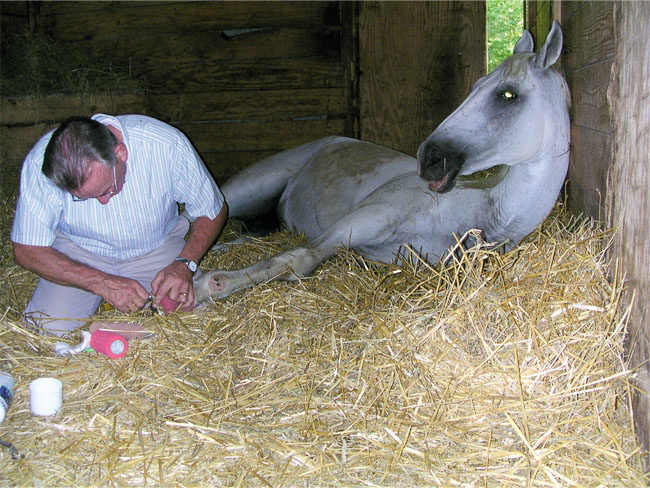American Farriers Journal
American Farriers Journal is the “hands-on” magazine for professional farriers, equine veterinarians and horse care product and service buyers.

Veterinarian Don Walsh works on the hooves of a laminitic horse. Walsh believes that keeping horses lying down as he works reduces strain on the ligaments, helping to prevent rotation of the coffin bone. He usually will crawl into a horse’s stall to do the work, as he believes horses do not like to have people standing high above them.
Treating laminitis isn’t just about the feet, says Don Walsh, an equine veterinarian of Homestead Equine Hospital in Missouri and founder of the Animal Health Foundation. “With all our effort to help the feet, we sometimes forget the most important part — the horses themselves — who need all the mental support possible to help recovery,” he said, speaking at the fourth International Conference on Laminitis and Diseases of the Foot, held Nov. 2 to 4, in West Palm Beach, Fla.
Walsh discussed slings, bedding and handling strategies for laminitic horses, while other presenters discussed anti-inflammatory and pain medication options.
Many types of slings exist, from simple to complex. Their function is to allow the horse to stand without bearing full weight on his feet for shoeing work and/or as a therapeutic strategy. “The worst thing about slings is that when things go wrong, they can go very wrong,” Walsh warns. “They have to have a quick-release system so you can yank one thing and everything comes off.”
He employs such a system at Homestead Equine Hospital consisting of thick belly and chest straps. “It’s quick to put on…